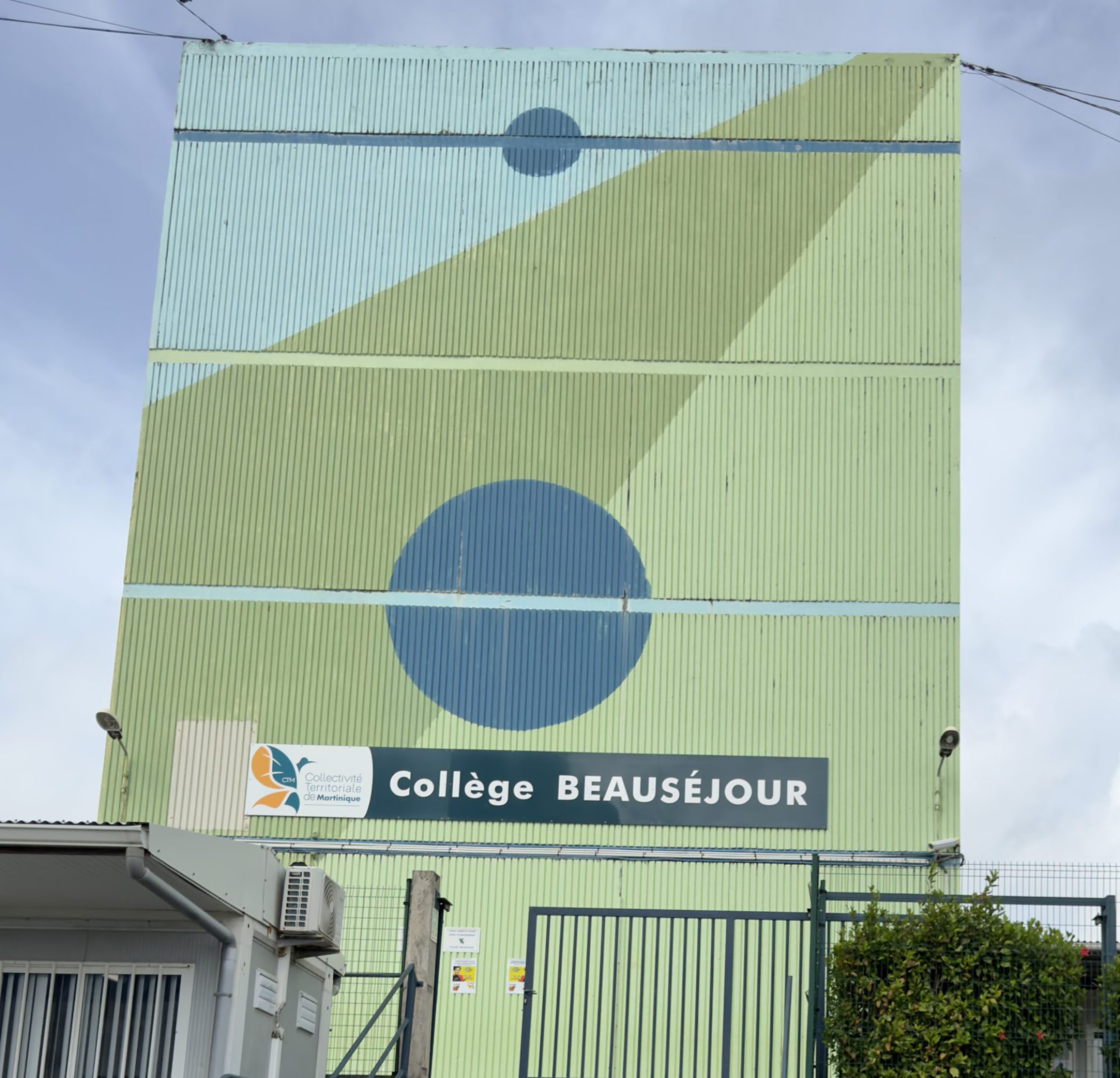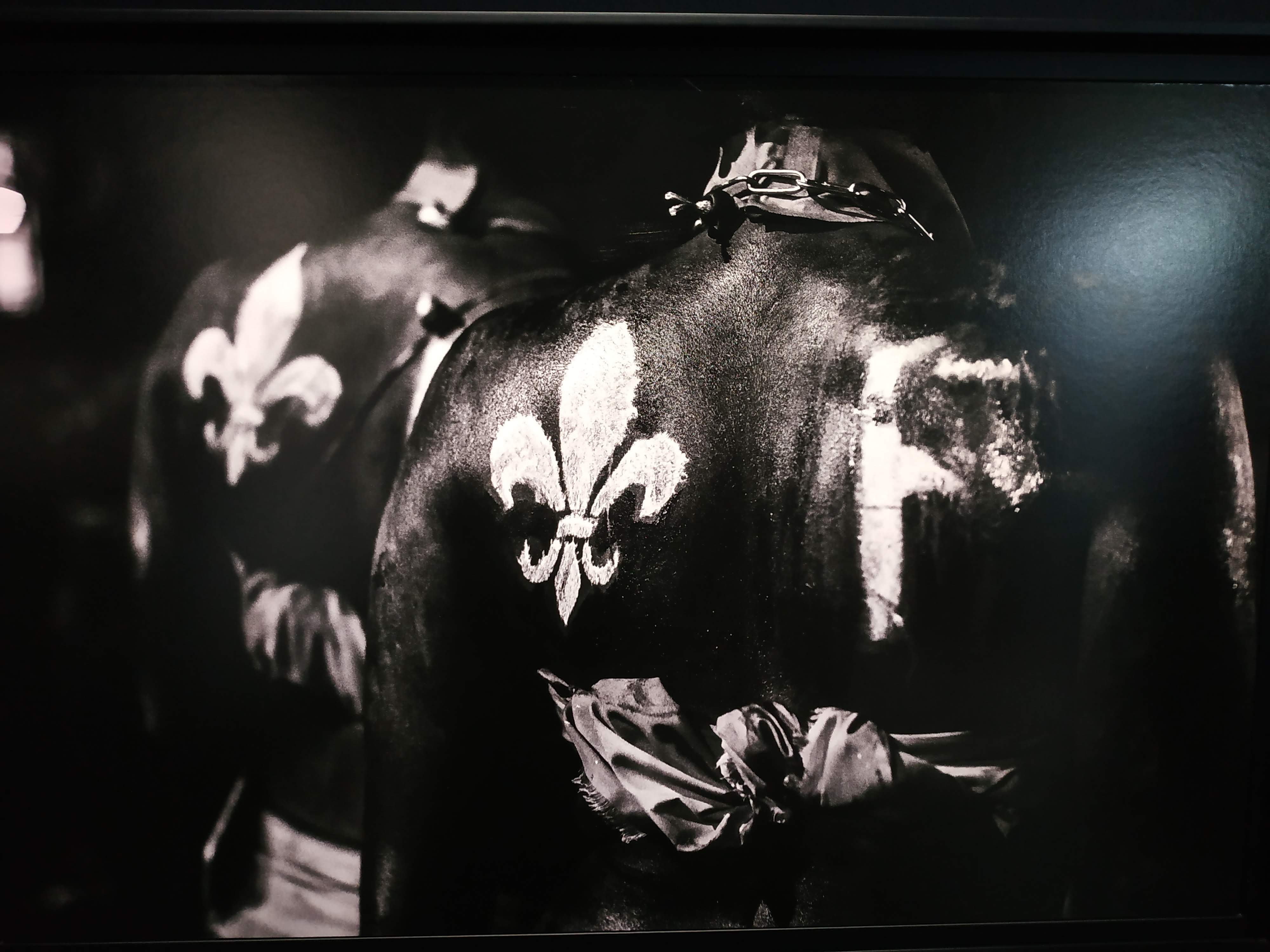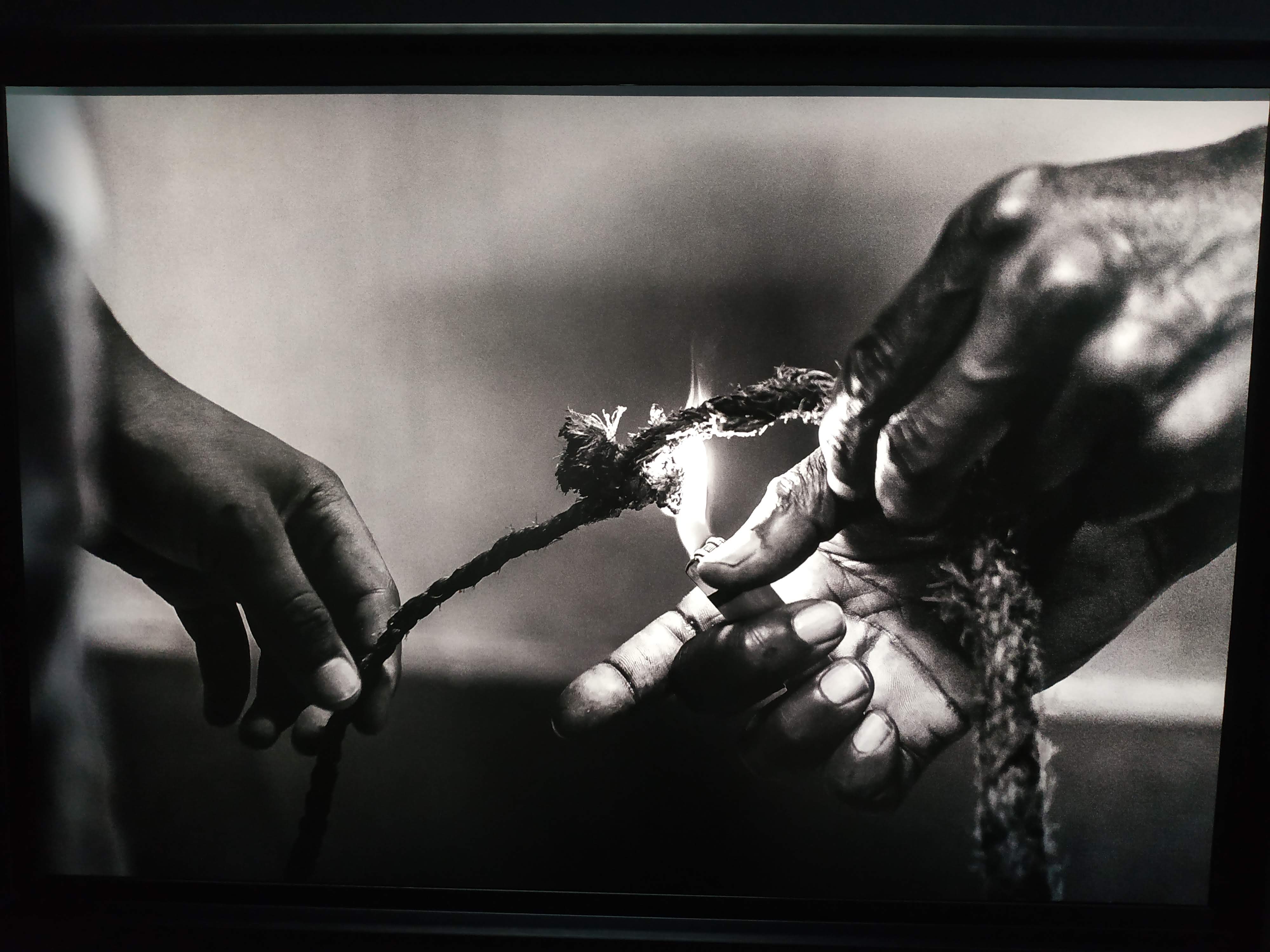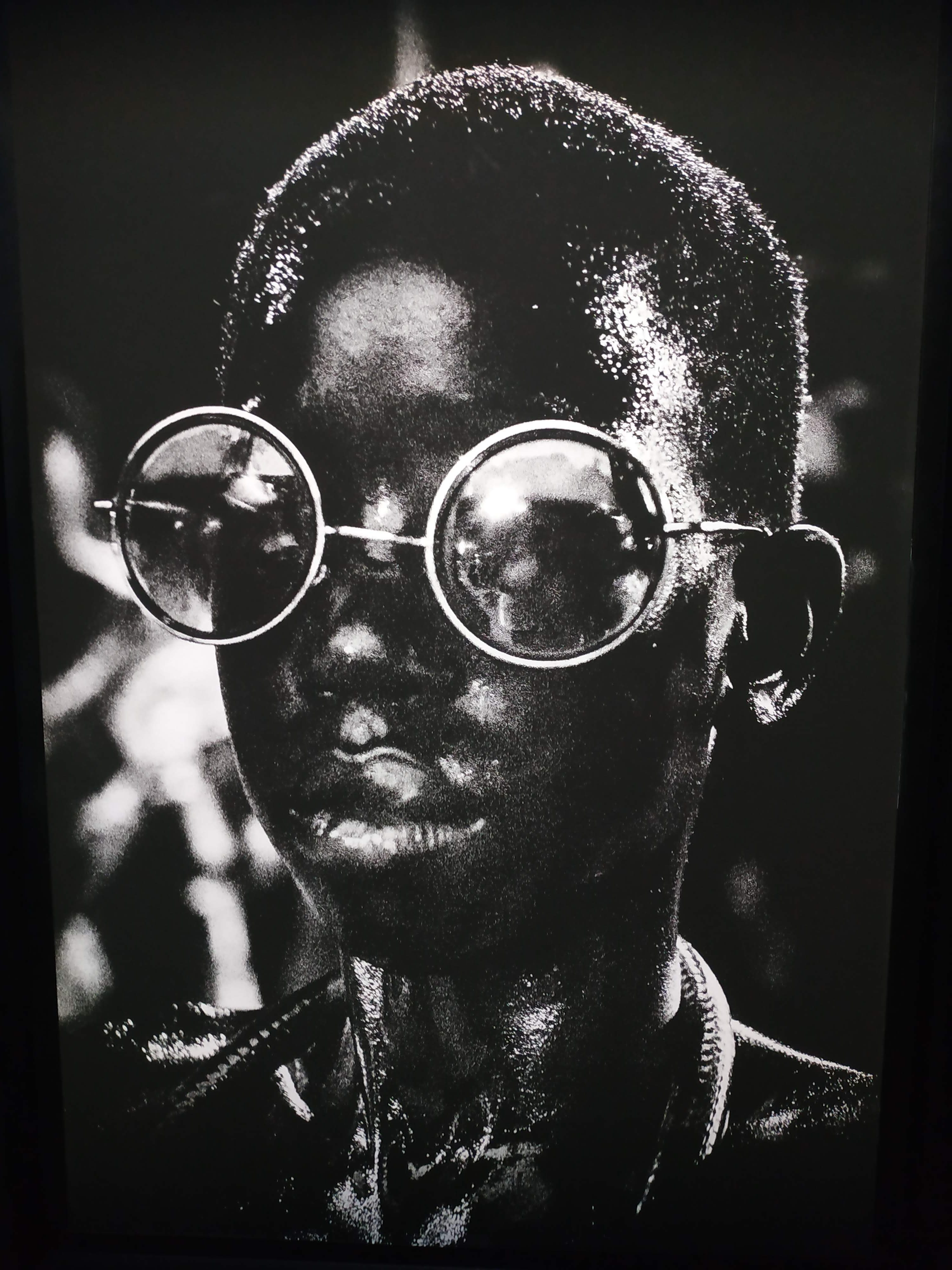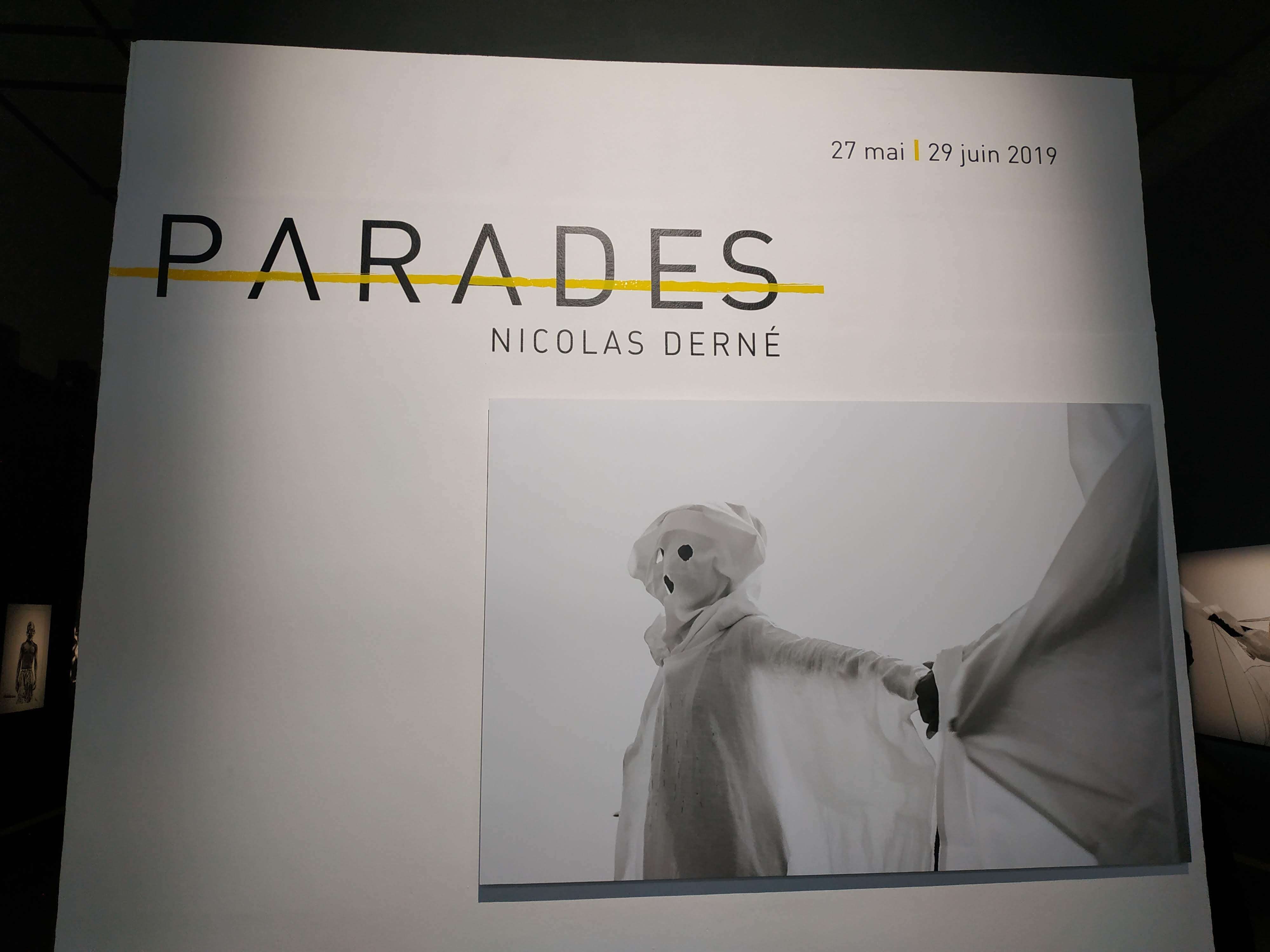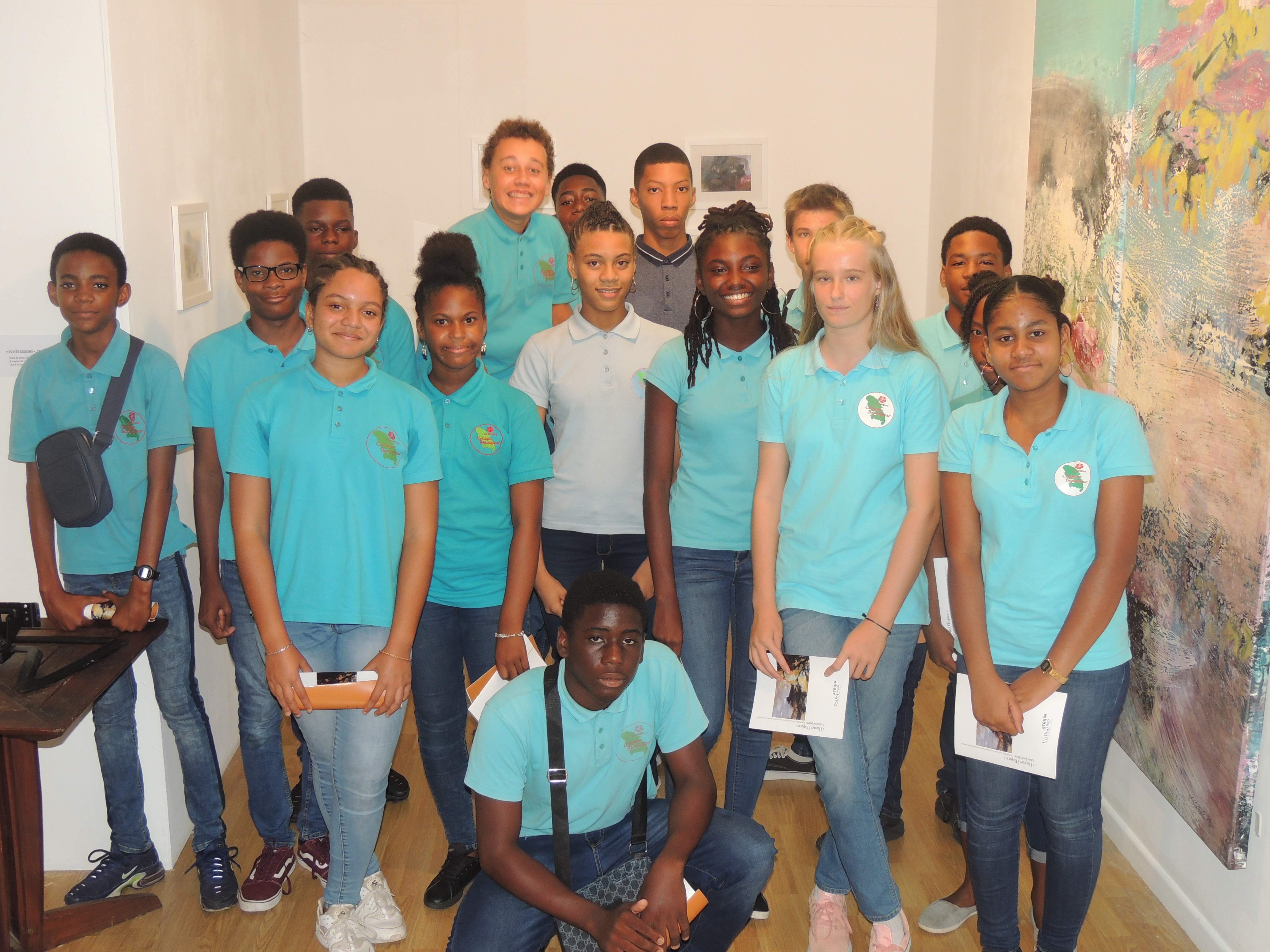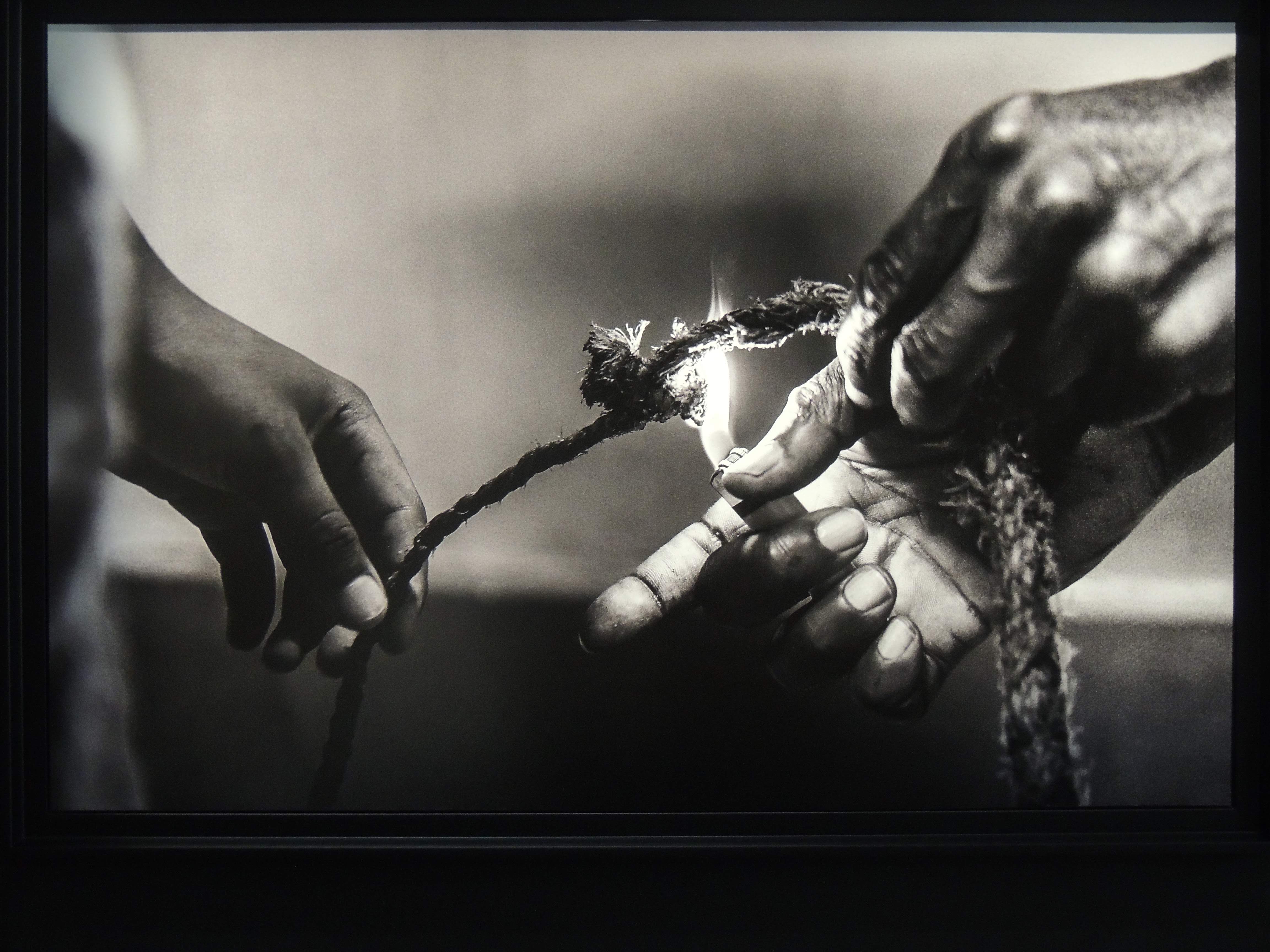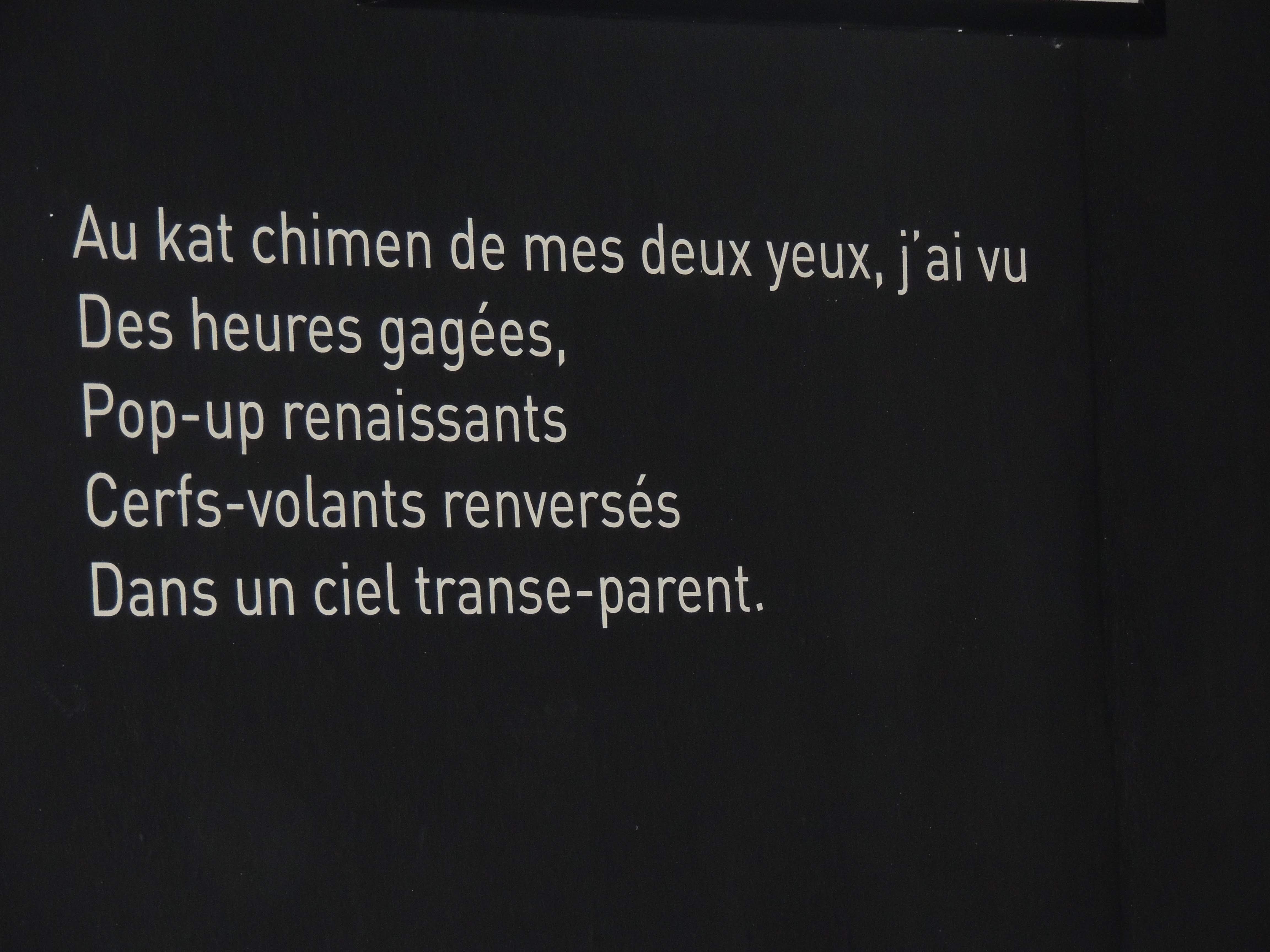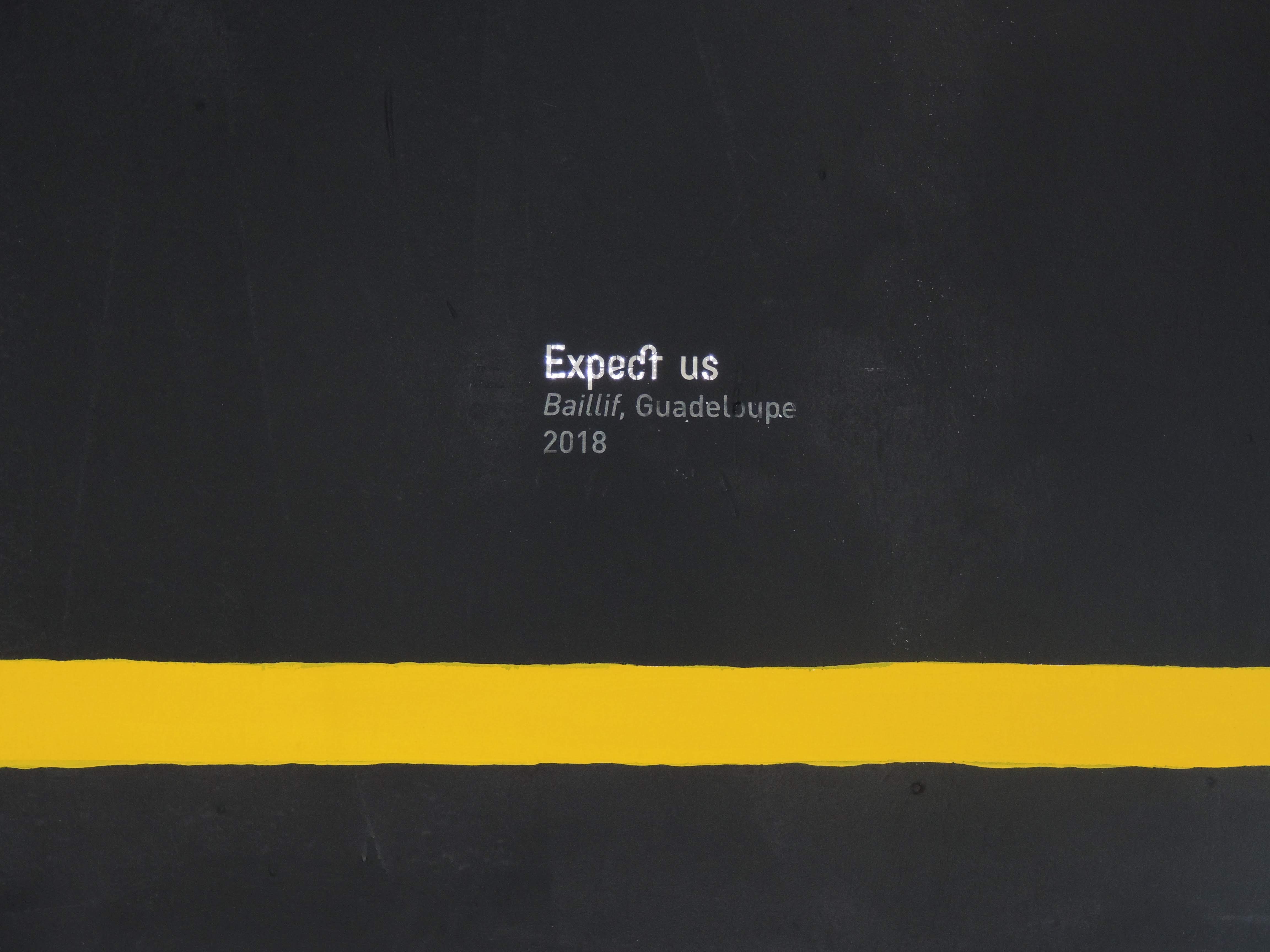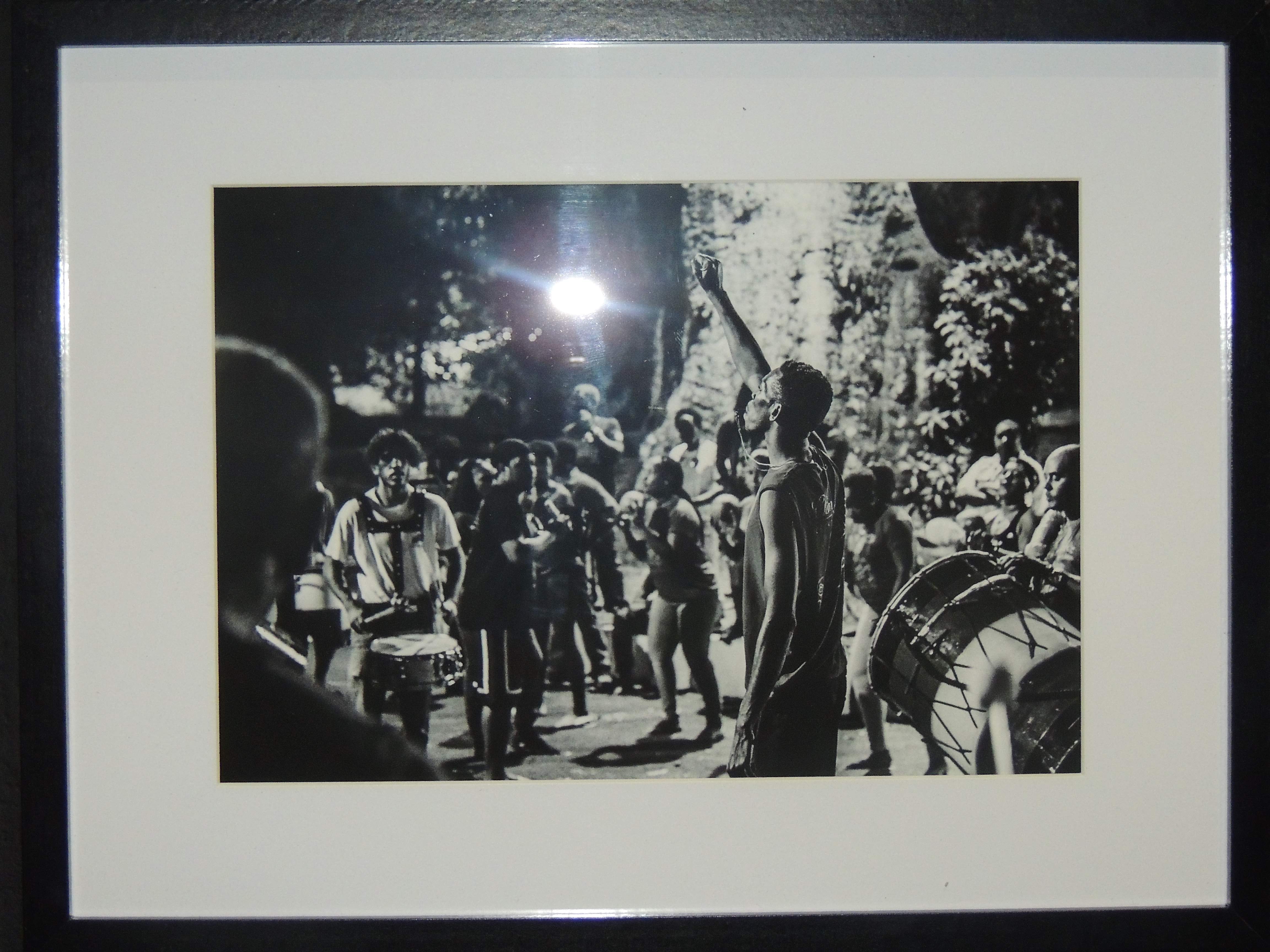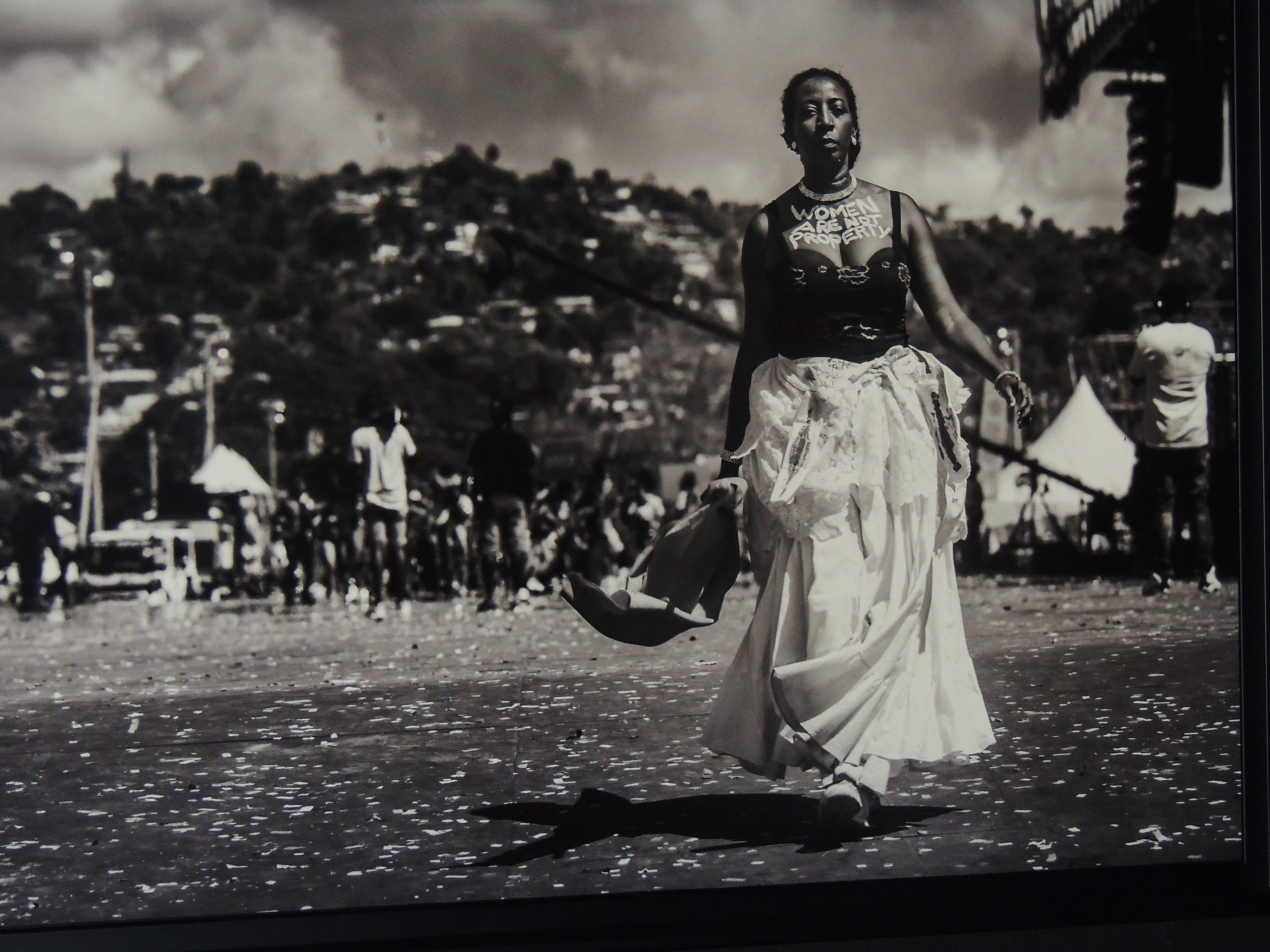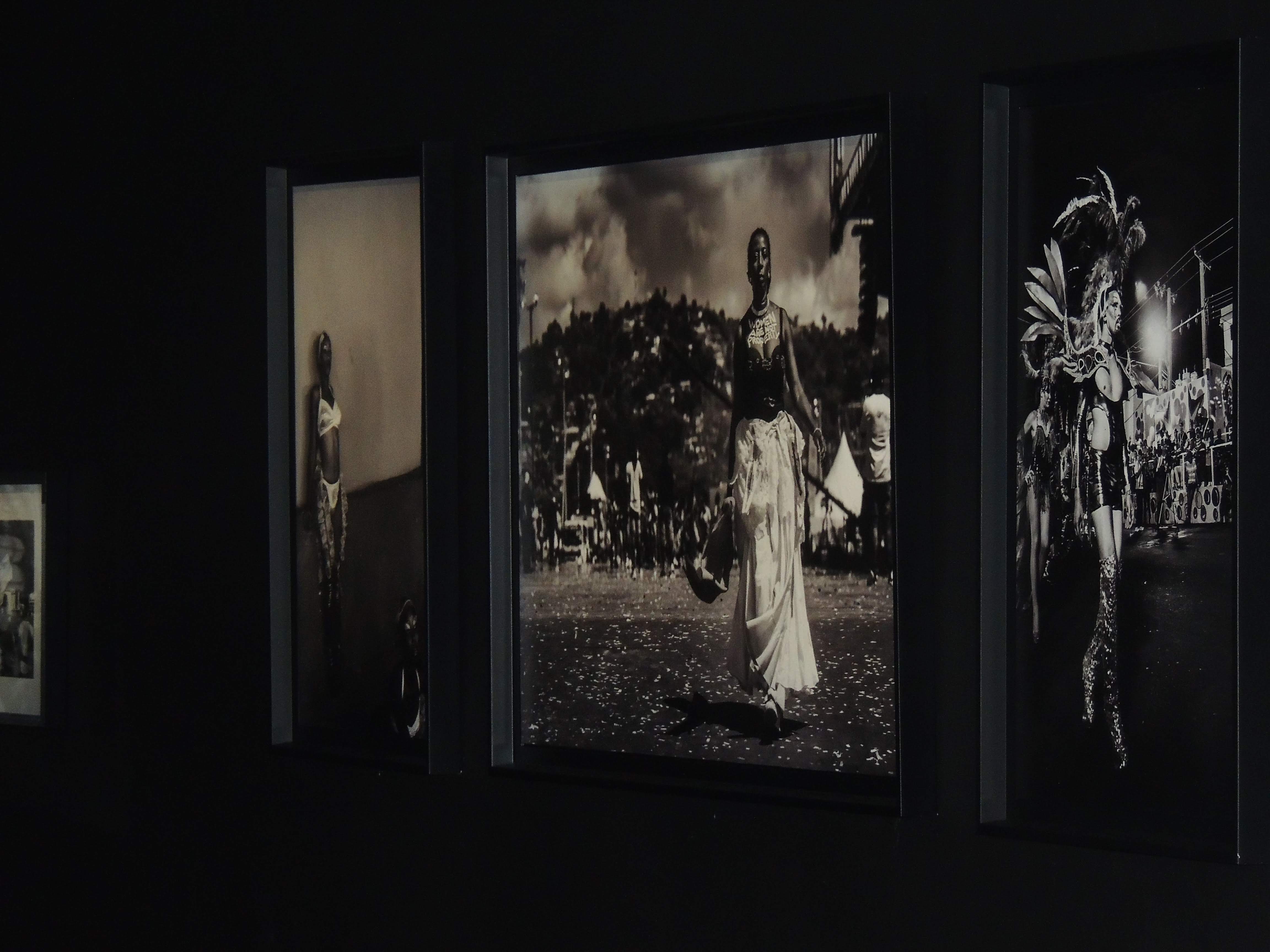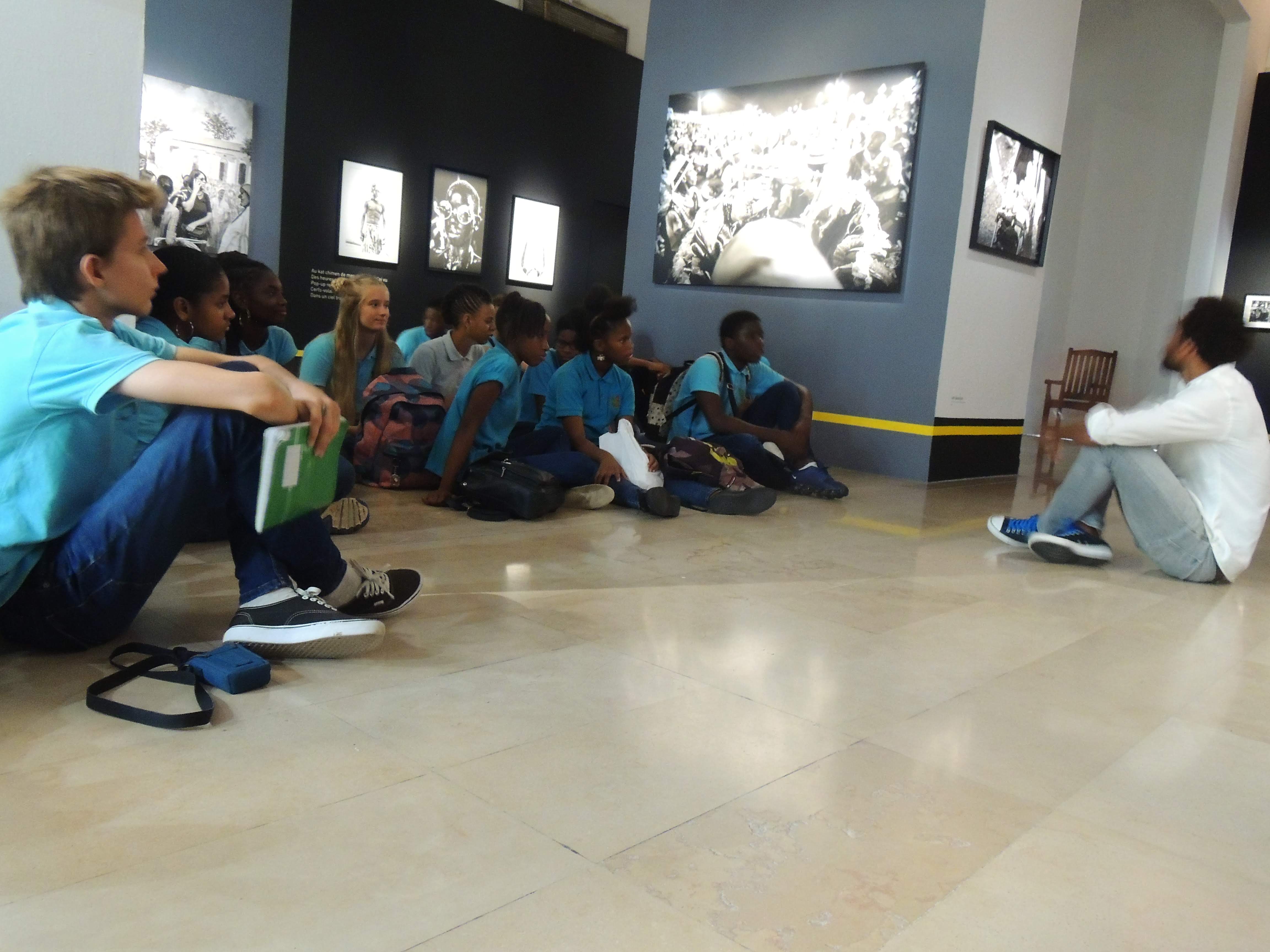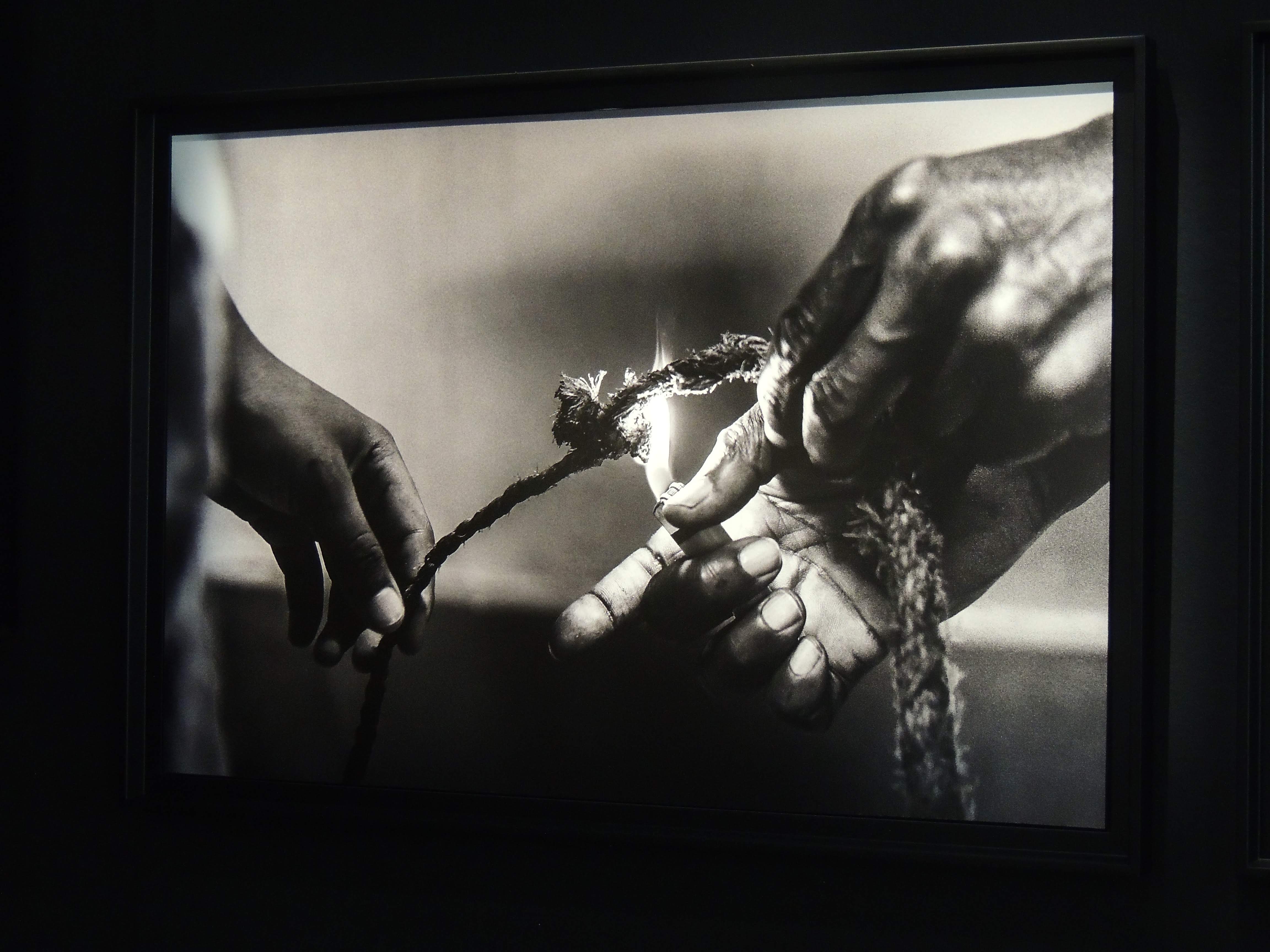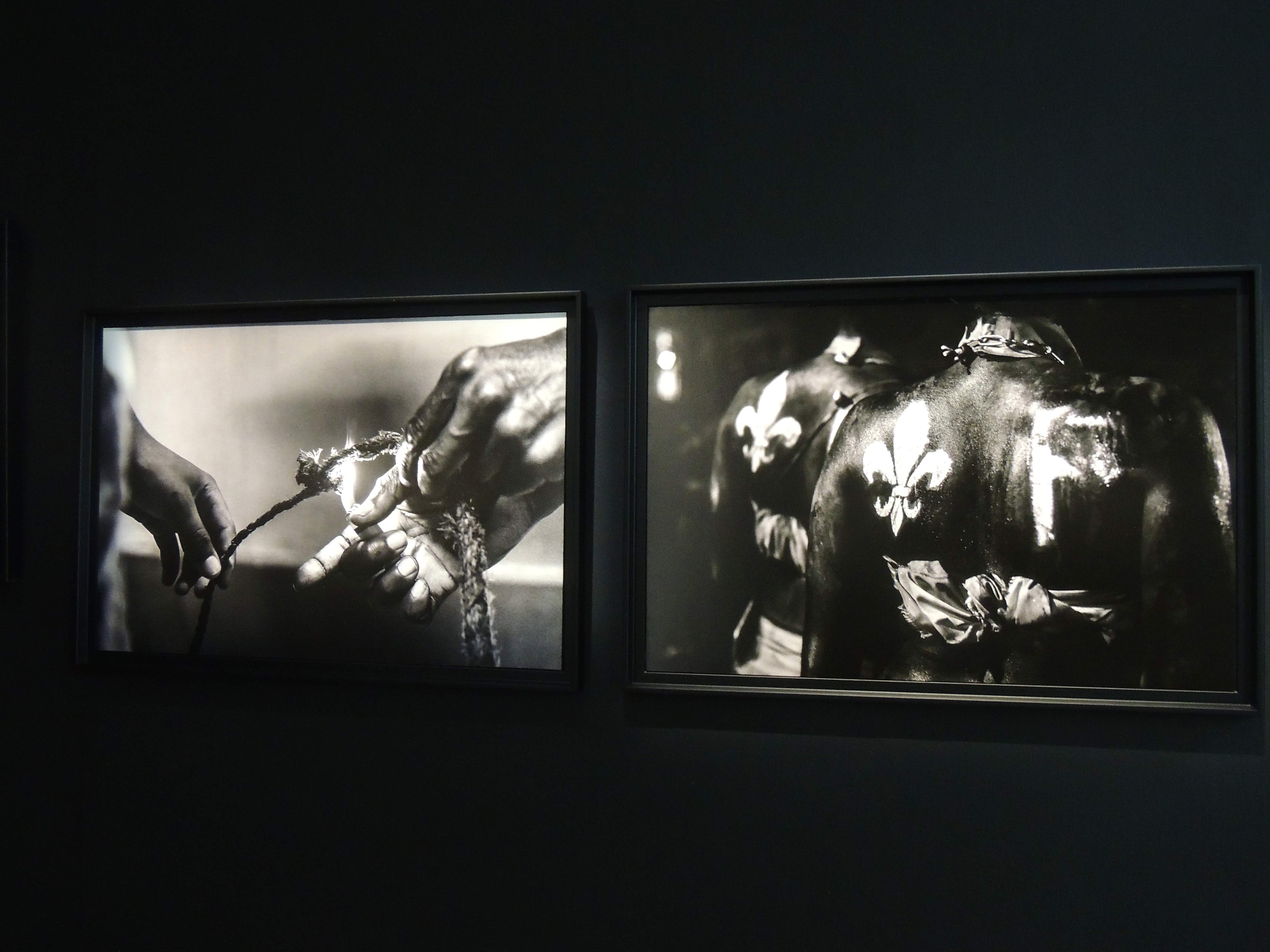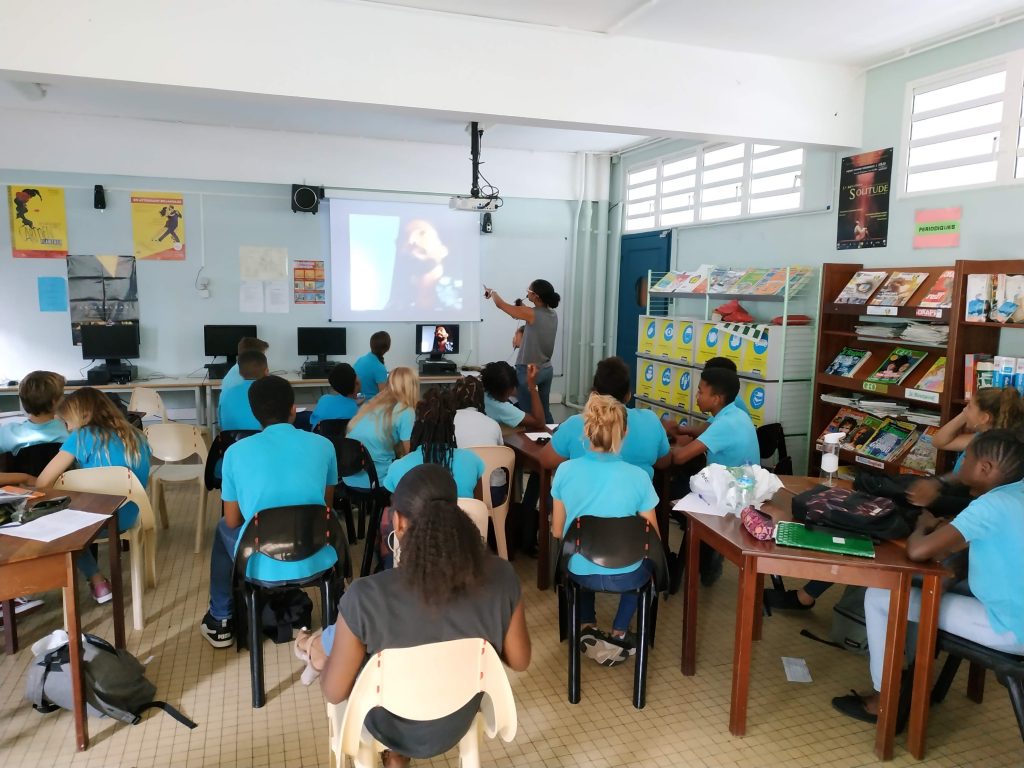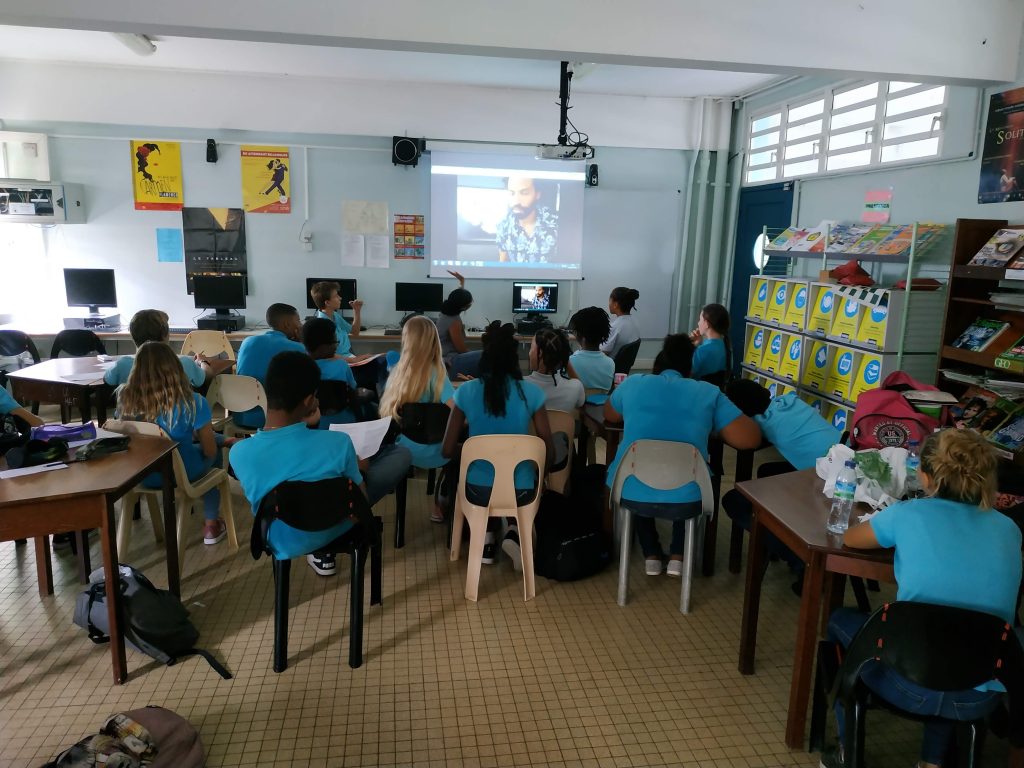
Parades. C’est le nom de l’exposition de Nicolas Derné visible à l’atrium, galerie André Arsenec. C’est avec cet artiste que nous avons mené l’atelier artistique et culturel depuis le début de l’année.
Nous avons enfin pu visiter son exposition qui semble nous raconter des histoires.
La nôtre, tout d’abord, ensanglantée, multiple dans l’origine et dans sa diffusion. Point commun entre nos îles, ce besoin de dire par le bruit, le fracas et la mascarade. L’histoire d’une génération, la nouvelle, la suivante, une rebelle dont la cause est la simple survie dans une mémoire à construire. Rebelles qui ont tout, mais n’ont le goût de rien.
Rebelles qui n’ont rien, pour certains, et qui pour avoir feraient tout. Même tout ce qu’il ne faut pas. Et finalement, elle nous raconte l’histoire de masques qui en disent long ; elle nous raconte autant d’histoires d’hommes que de femmes pour peu que l’on s’arrête et lise derrière les titres. Derrière la ligne jaune. DO NOT TRESPASS semble-t-elle nous dire. Car derrière la ligne, ce noir, ce blanc, ce brut, pour dire la vraie couleur des gens. Sans fard, sans artifice.
C.C
Plus d’informations sur le site de l’auteur.
Télécharger le portfolio.
Version anglaise rédigée par les élèves de la section euro-caribéenne :
Our meeting with Nicolas Derné
June the 6th, we met the professional photographer Nicolas Dermé in the conxtet of his exhibition « Parades » at the Tropiques Atrium. His exhibition is about carnival in the Caribbean. He explained us that through his pictures, he wanted to told a story. The photographs showed the carnival with a different way. Indeed, the pictures are in black and white and often represent people who had strongs messages or importants causes to defend. Mister Derné said he thought that carnival can be a moment of freedom and expression. The students of the english and spanish section had the chance to interview him:
Students :
Have you travelled a lot ? Which country/continent inspired you the most ?Nicolas Derné :
Yes, I travelled all around the world. I went to Australia, Asia, Africa and to different islands of the Caribbean like Cuba, Trinidad, Guadeloupe… I was especially inspired by Africa because Africans have a very interesting culture.
It’s incredible how any of them is able to tell you about his/her culture, going deep into details. I remember I found myself totally unable to talk about my own culture when I met them.S.:
Why have you chosen black and white photography? Why did you stick to that aesthetic choice for an exhibition about carnival which is known as very colourful ?
N.D.:
My choice of this aestethic was important for me because I think it gives another vision. I choose black and white for an exhibition about carnival because I want to show the other sides of the celebration, not only colours and joy.
S. :
What are the similarities and the disparities between the Carnival parades organized in Caribbean?N.D:
The theme of the devil is a very common theme of the carnival. The colours and the
costumes are also similar. But some traditions are different from an island to another.After the interview, Mister Dermé showed us some of the photographs and explain his process to make this exhibition.
Some of his photos:
☆ “ Wet set the rules ” that represents a fire-eater.
☆ “ Money money money ” referring to a tradition of Trinidad
☆ “ Le dieu du vaincu ” According to a poem of Aimé Césaire
☆ “ Woman aren’t propriety ” a woman walking with her head up, in way determined, she seems sure of her.
S:
Most of your title are in English: deliberate choice or spontaneity?N.D: Spontaneity because, the titles pop suddenly in my mind and they are often in English.
Meeting with the photographer
On Thursday, June 6, we visited, via the video conference, Nicolas Derné’s « Parades » exhibition: Parades. This one was held at the Tropiques Atrium. The photos were taken in different islands of the West Indies including in : Martinique (which is his home island), Guadeloupe, Dominican Republic, Guyana, Cuba, Saint Martin and Trinidad. Each one has a story.
Before having a passion for photography, he was a computer engineer. In 2006, he devoted himself to his two passions: photography and travel. Today, he has no regrets about launching himself. He didn’t want to show his relatives a selfie of himself in front of a monument. He wanted to: « tell what I saw. »
These different trips allowed him to speak fluent English, Spanish and of course French (we were able to ask him questions in these different languages). His most significant trip was to Africa, which influenced his choice of theme, which was the « carnival ». But he has also travelled to Asia (Singapore) and Australia.
All the pictures we could see were in Black and White. He chose this technique because he doesn’t want us to focus only on the colour, he wants to force the spectator to imagine them. In addition, black and white photos capture light. While color deteriorates the light and therefore the photo. We can also see that he uses different pigments (grains) according to these photographs.
Many similarities were observed in the carnivals photographed: the colourful costumes, the « Neg gwo siwo », the red devils, the people marching in the streets or in tanks. However, we noted a difference: carnival is more expensive in Trinidad.
When Nicolas Derné goes on a trip, he doesn’t have a clear idea of what he’s going to take. When he is captivated by a person he takes a picture of them: » the first thing that takes is my eye » In a picture that takes place in the Dominican Republic, we see a woman who shows a strong image of her body. On her outfit there are drawings of female sexes. It is an image that is both captivating and shocking.
He never builds his drawings in a notebook, but already has photo ideas in his unconscious. He is spontaneous and jumps at the opportunity when it presents itself. His images build a discourse.
During this exhibition we noticed that all the titles were in English. It was a deliberate choice of the photographer. He chooses the title in relation to the photo.
Mr Derné’s first intention is to break stereotypes about carnival in the Caribbean: « No longer believe that it is a symbol of hubbub, of colours seen from the sidewalks or balconies ».
Some photos were created by computer, but they were always taken from reality. For example, there is a photo taken in the Dominican Republic where he drew inspiration from Greek mythology by representing the « Minotaur », and he said a striking sentence: « Real but totally unreal at the same time ». One photo was very shocking (he even hesitated to put it on). On this one we saw Nazis in a car and in the middle Adolf Hitler. But behind this there is a deep message. Which is to denounce the crimes he had committed against Haitians and in which few people were interested. Moreover, this photo evoked that if the devil reincarnated, he would be Hitler.
The first image that most marked us was a photo that he took during a carnival in Fort-de-France, Martinique (it led him to do his project). We see a man disguised as a woman pushing a stroller. In this one there are babies with a cigarette in their mouths. Nicolas recalls that he saw: « a transparent image of the society in which we live » and that « the Lost Generation is a bit like this lost generation as if a transmission had not taken place. »
Impressions :
The exhibition was rich in history and anecdote. It was amusing to wonder what message Mr Derné wanted to convey through his photo. In addition, he answered all our questions and tried to explain everything. One photo was very striking. On this one we see three characters in the center, one of whom has a mask. They play skipping rope. But you might also think they’re fighting. All around them there are people in a circle cheering for them. The photographer wanted to show that they don’t need to be rich to be happy and that the carnival is a time of sharing where you can have fun. We can also think that they help each other, because they are in the same boat (they are poor).
The fact that the photographer uses a Black and White technique, increases the light and makes more impression on the minds. In addition, the photos attract the eye and make them more natural.
Finally, I found the exhibition to be very varied and dynamic.
